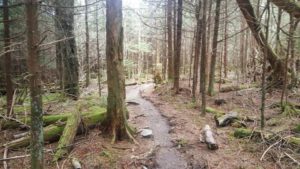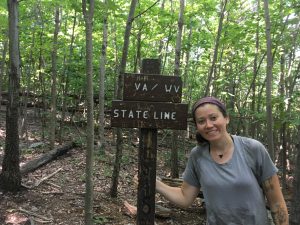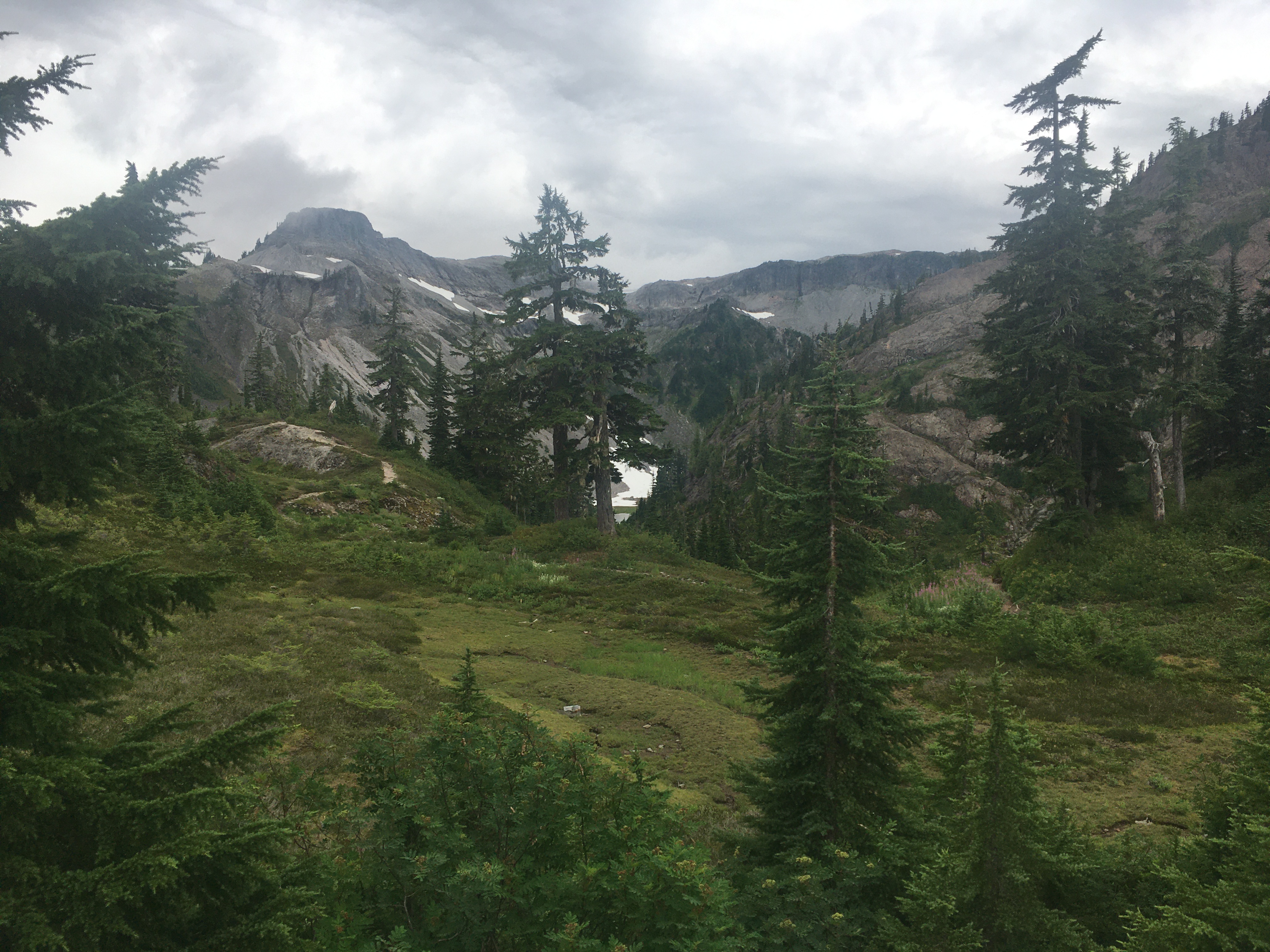“I came out here to be by myself,” said Plane between bites of unclean grapes, “like that guy in the movie Into the Wild!”
No wonder 60% of thru-hikers in my study said that the people were their favorite part of the trail.
They felt part of a collective whole.
By the end of the trail, the people changed Plane’s perspective on a solo hike. “Don’t get me wrong,” he said smiling with a hand in the air, “I still love my alone time and not having to worry about others.”
Having to be social at his job led Plane to seek solitude on the hike; the trail community made him not want to be alone.
The catch-22 of thru-hiking.
Hiking with a few different groups throughout the hike showed Plane he can fit in anywhere. When he needed time to recharge, he would listen to people talk, acting as a fly on the wall of their conversation.
Before the hike, Plane assumed the trail would reflect his home life by finding solitude before friendship. It was clear from watching hikers that strangers became family, but never thought it would happen to him.
Fitting into the hiking community didn’t concern Plane. The experience would be like Thoreau’s life of solitude in nature, right?
During the first month on the trail, he realized that it wasn’t solitude that was missing in his life; it was community. As though he’d eaten a sour grape, Plane voiced that he now “hated Thoreau’s bullshit solitude and rugged individualism.”
A friend of mine has a PhD in neuroscience, and one day we got into a discussion about our fields of research. With the internet at our fingertips, we searched the beginnings of our respective fields, starting with neuroscience.
I know what you’re thinking, and the answer is yes: my conversations are always this fun.

We learned that the co-founder of social neuroscience is John Cacioppo. After several minutes of laughing at possible ways to say the last name, we landed on a proper pronunciation. Cacioppo recognized that hardiness grows in people through symbiotic relationships, not rugged individualism.
President Hoover played a role in making “rugged individualism” unanimous with self-reliant Americans. These were individuals who provided for themselves instead of working together in larger communities.
In a 2016 poll, Pew Research found that 57 percent of Americans think that they (and they alone) create their success. This poll highlights the Western view of individualism.
The water’s resistance didn’t slow Plane down. While describing his excitement about the trail community, he moved with dramatic animation. Over the sound of moving water, Plane said that he stopped and talked to hikers, no matter which direction they were going.
One would think Plane was trying to reach a certain number of steps by how much he walked back and forth to his chair. I followed with my eyes as he grabbed a Coke and a bag of Sour Patch Kids, then back down the five steps into the shallow end of the pool.
“I didn’t expect to get sucked into the culture as much as I did,” he admitted while trying to open the bag of candy.
Just then, a fly landed on one of the grapes, flapping its wings in a frenzy at the taste of something sweet. Fixated on opening the candy, Plane hadn’t noticed. The insect flew away as soon as it had its fill.
Wet hands made Plane unable to open the candy, so he shuffled back to the fruit with minimal splashing.
Not the grapes!
I couldn’t watch. The next piece he ate was sure to be the one the fly had landed on.
Turning towards me and away from the grapes, Plane held up a forefinger, adding that one person can quickly become your best friend on the trail.
I sighed with relief.
Then, he plucked a grape from its tiny branch and popped it into his mouth before I could say something. Like passing a car accident on the highway, I couldn’t help but watch him swallow the fly-infested fruit.


